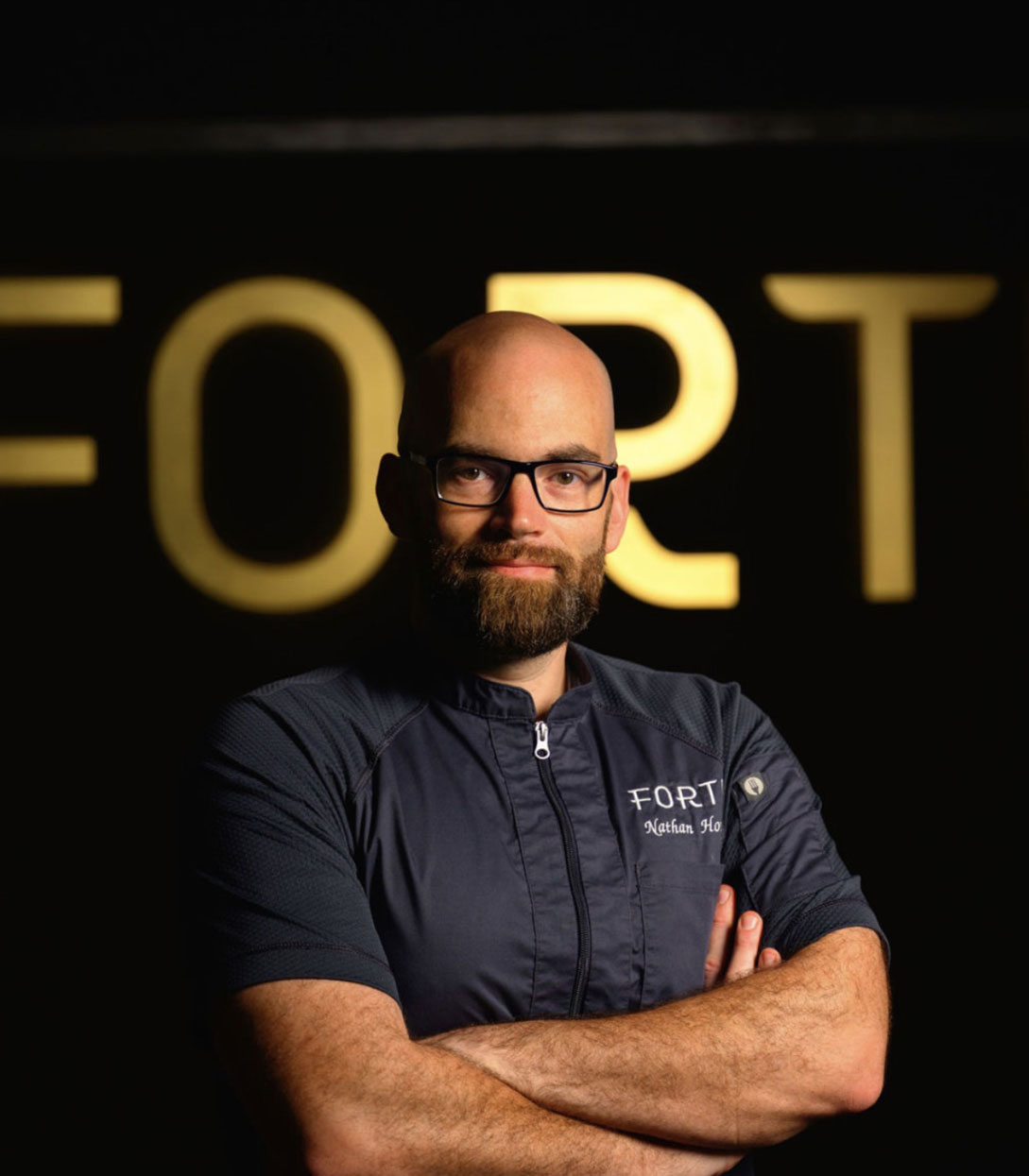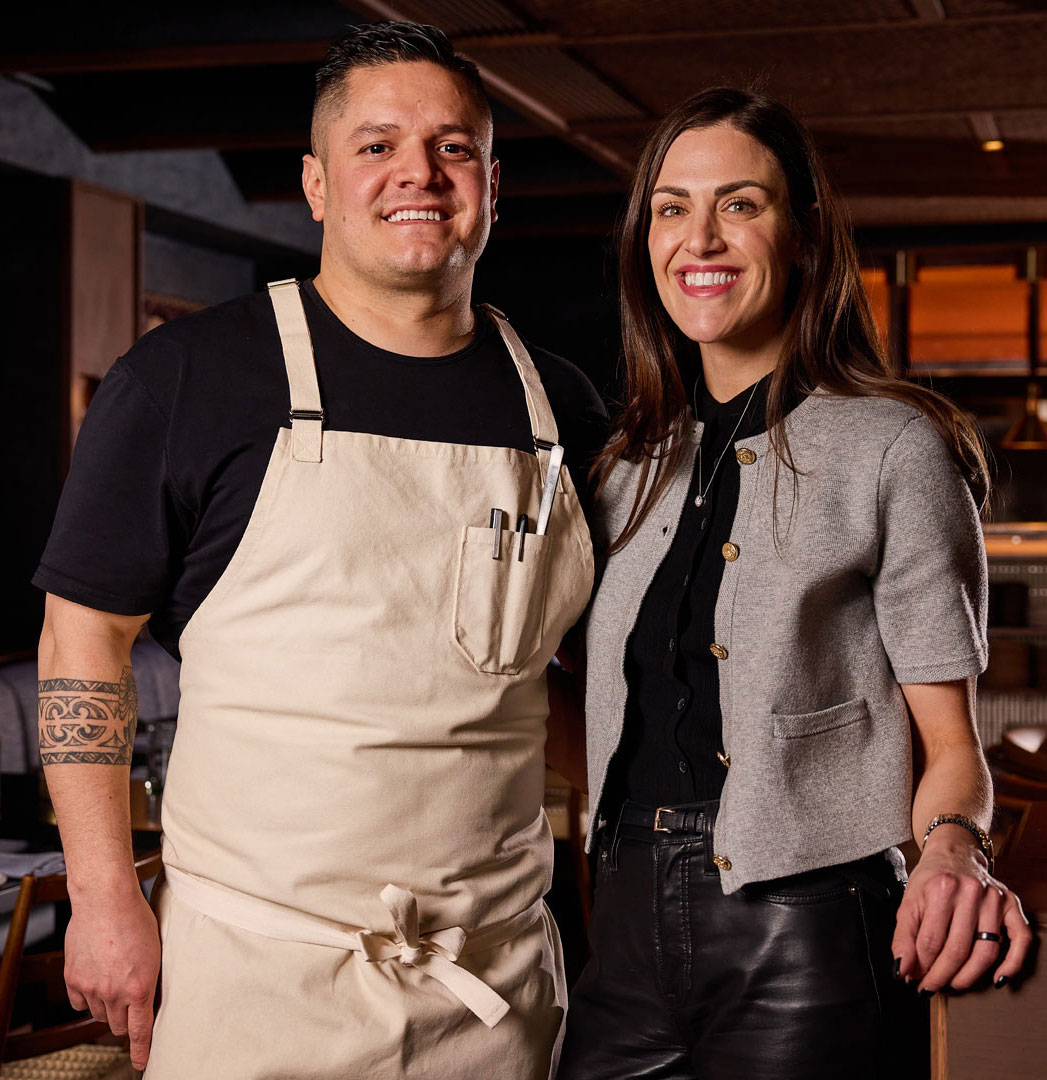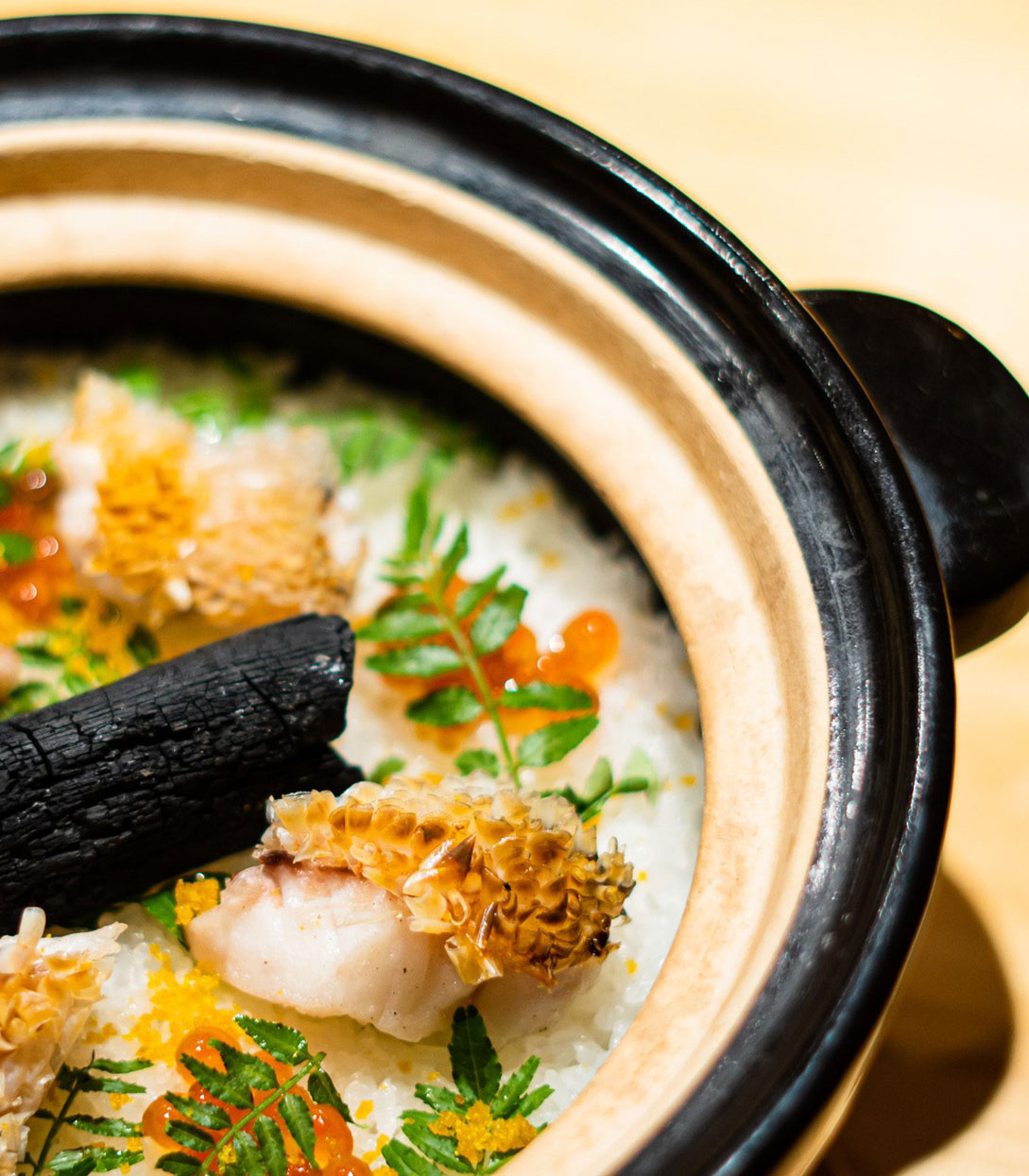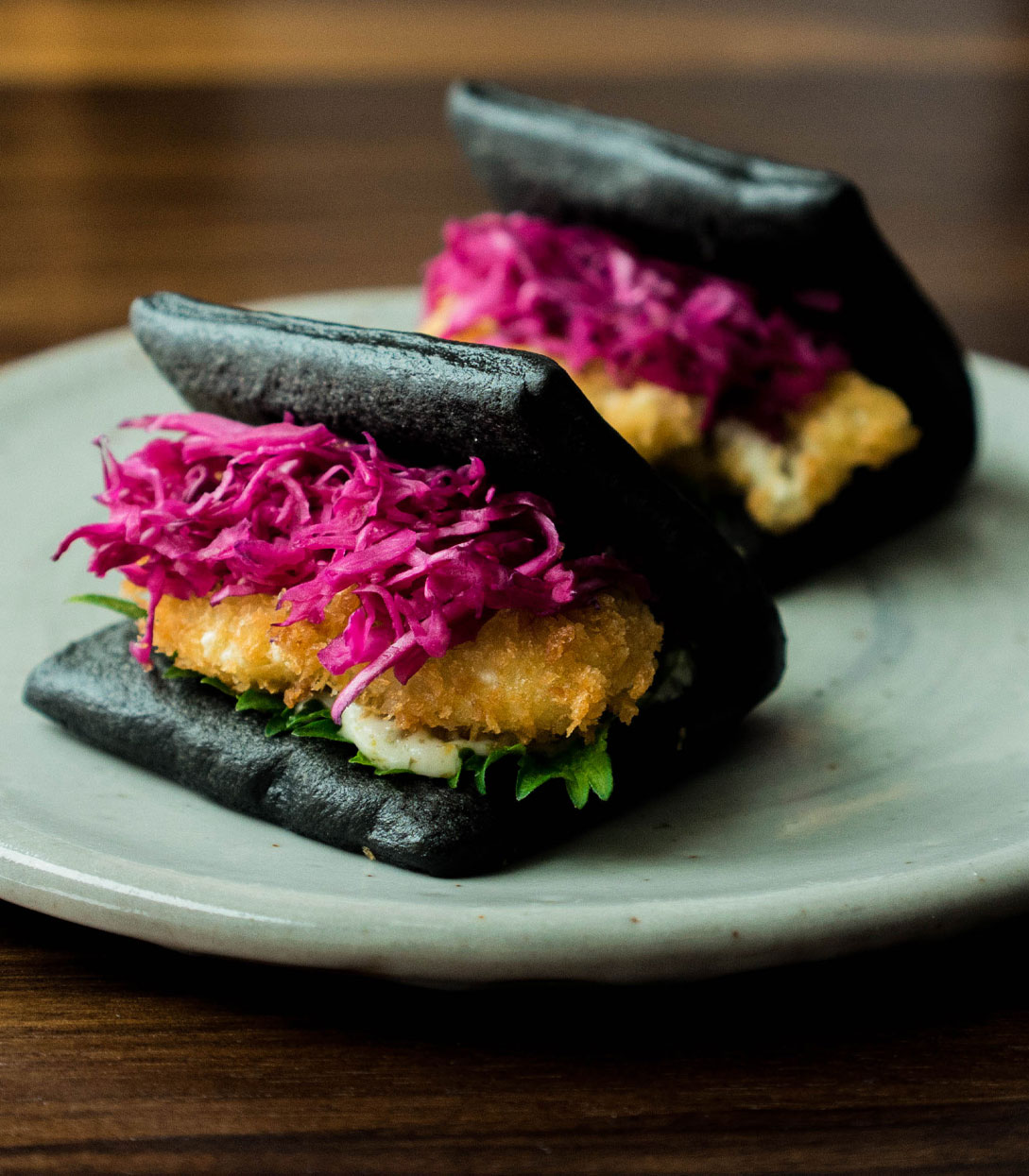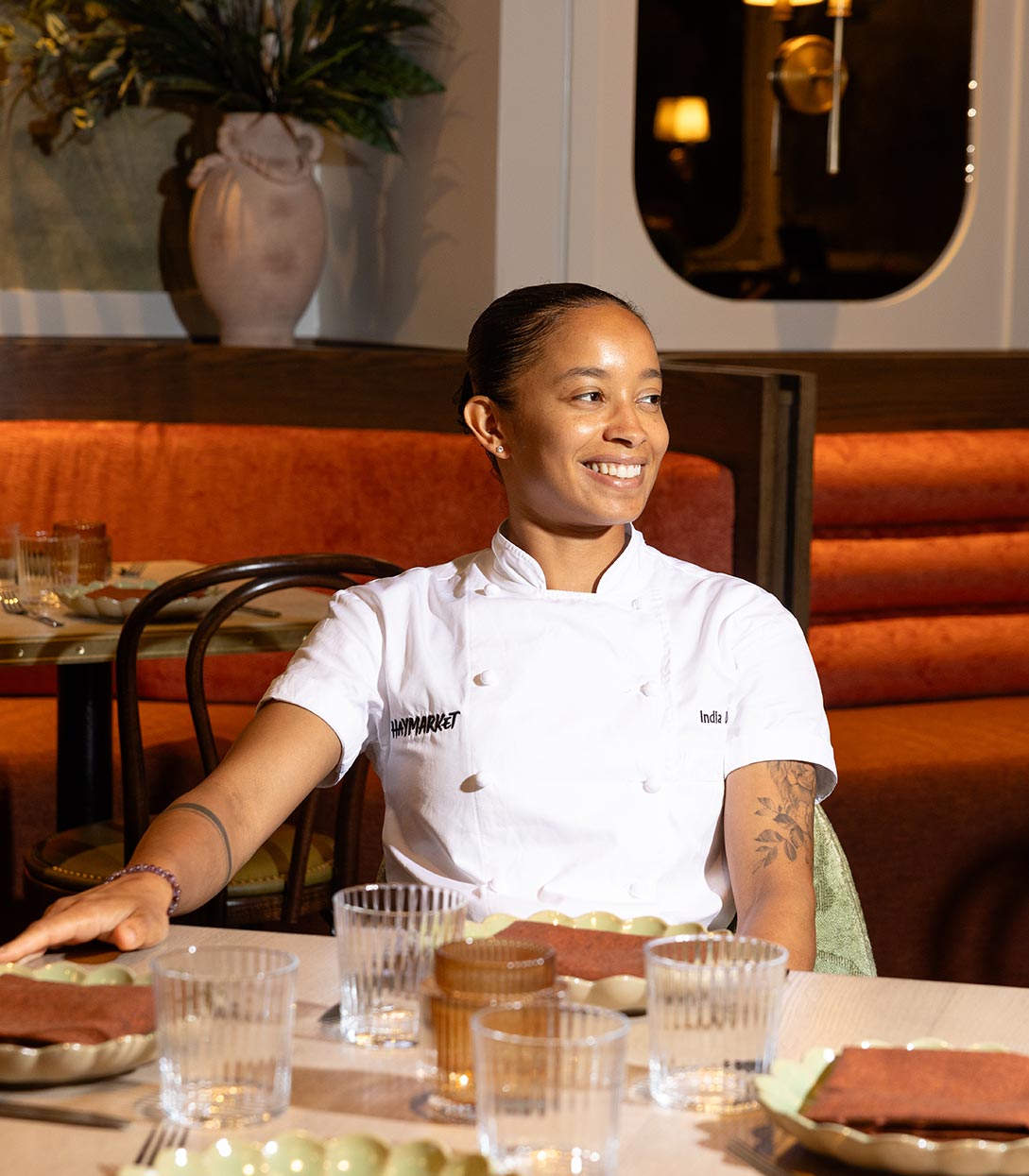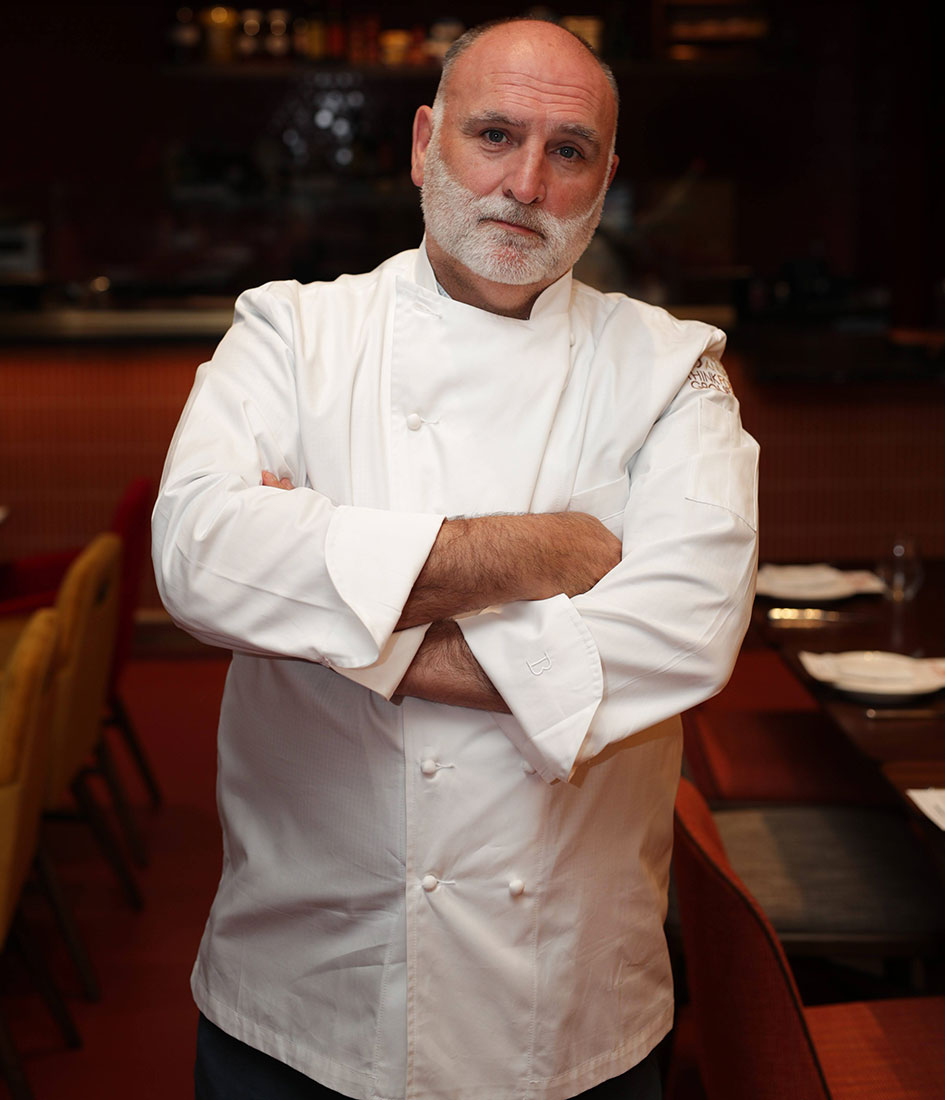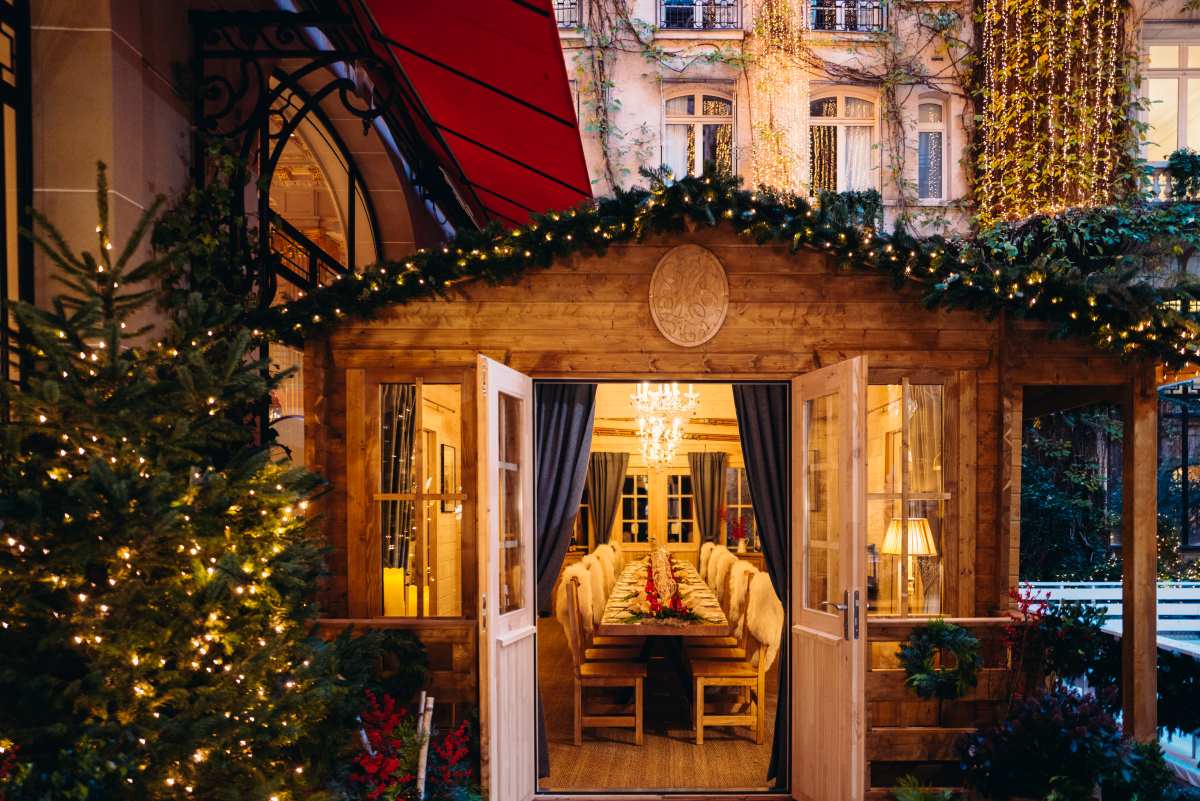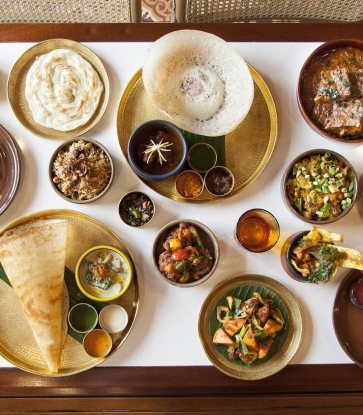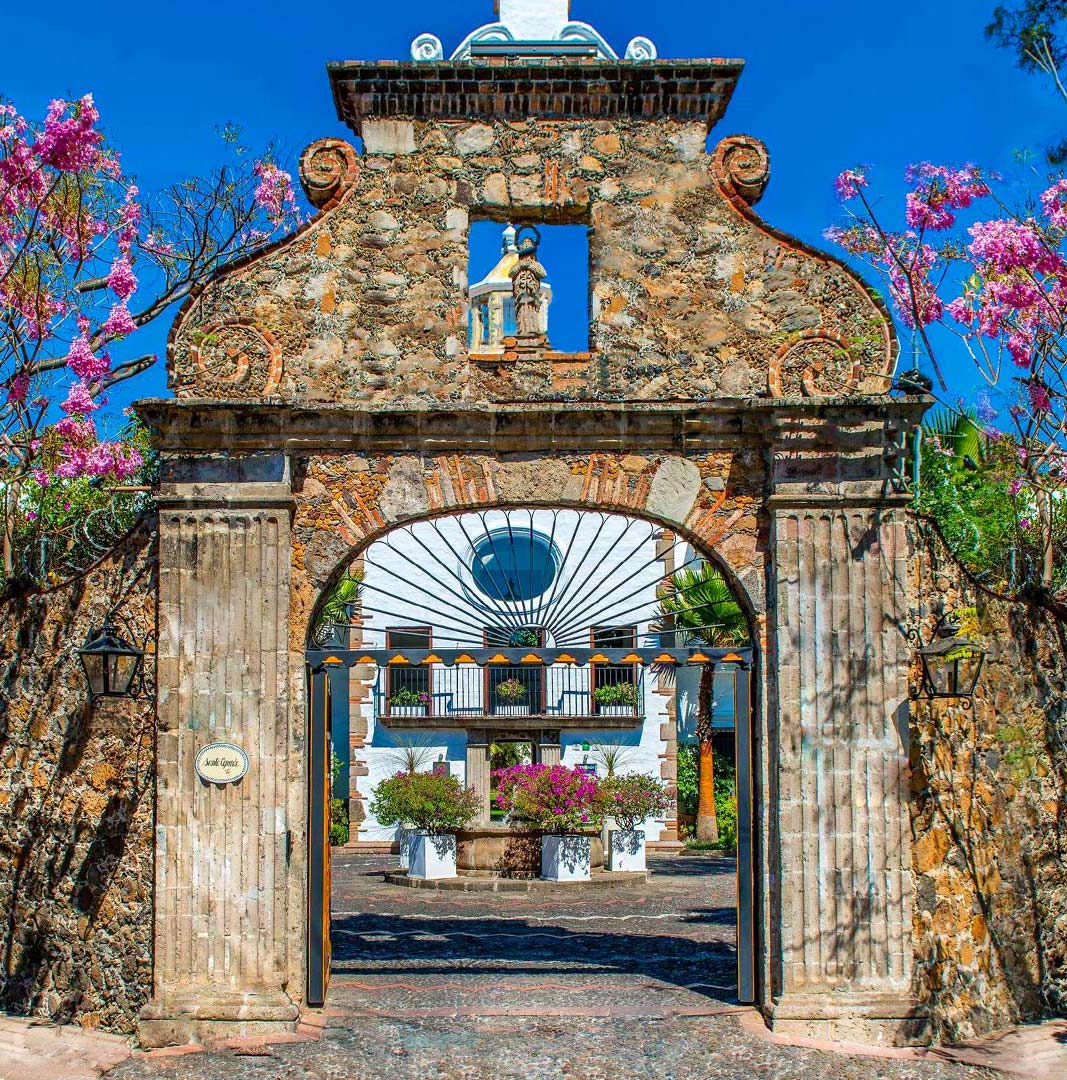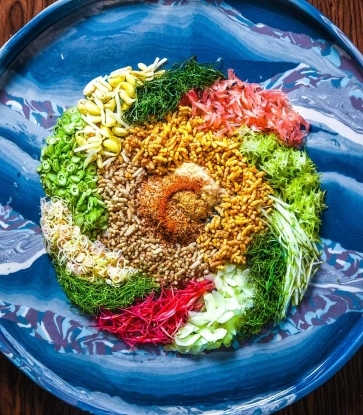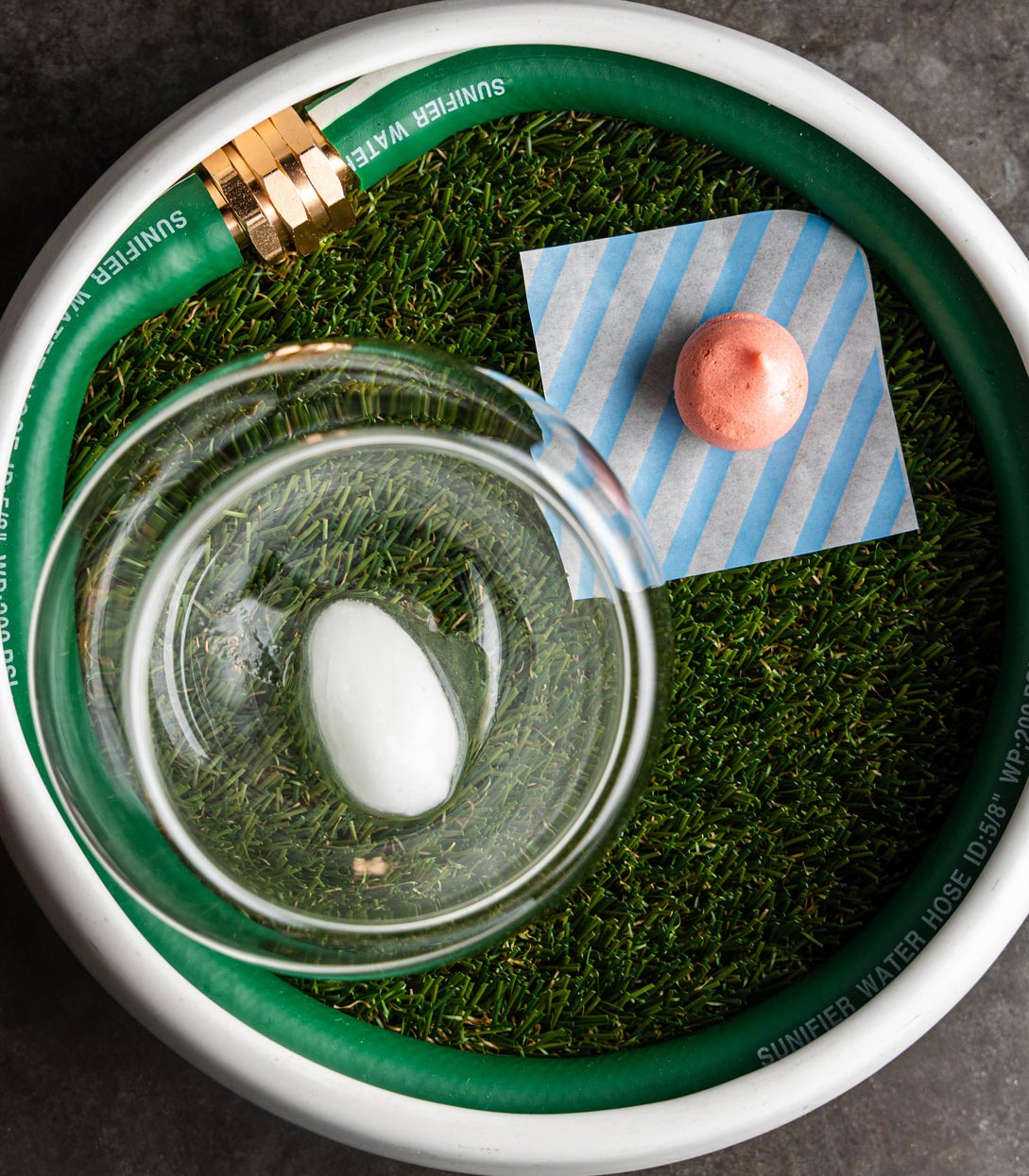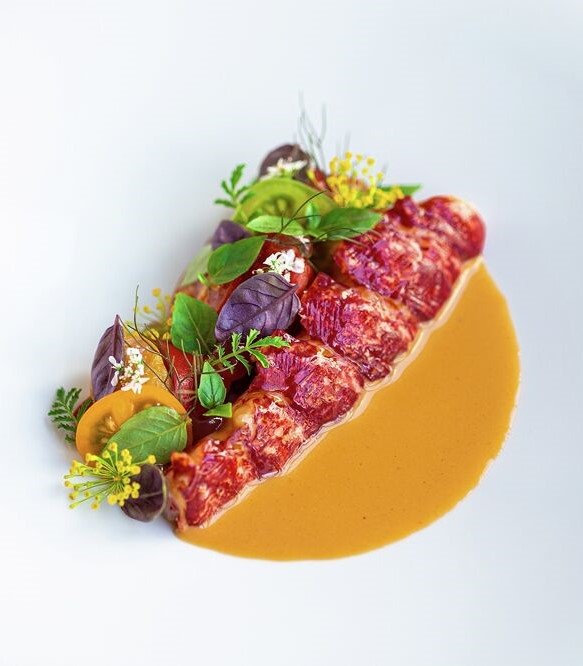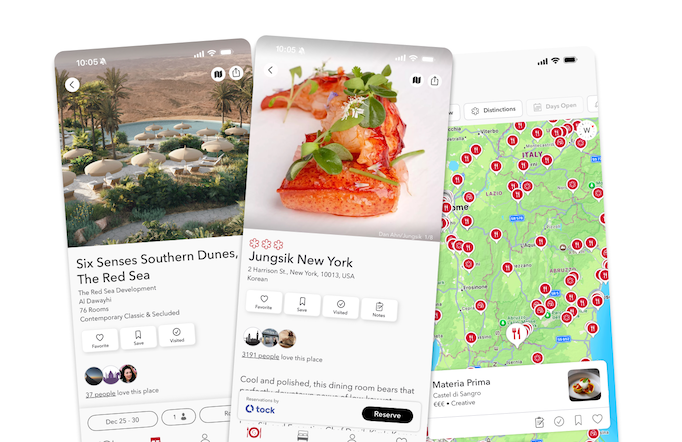There are seven tables across the decidedly intimate rooftop dining room of One MICHELIN Star Esquina Común, a cult favorite restaurant in the Condesa neighborhood of Mexico City, although that number can stretch to eight or nine if the night takes a turn.
When a party unexpectedly expands on a recent evening, a waiter conjures a small two-seater out of storage. In the entryway, a vintage couch and coffee table have doubled as a low-top when friends dropped in unannounced.
Like the best kind of hosts, Chef Ana Dolores González and her partner Carlos Pérez-Puelles run their restaurant with a spirit of enthusiastic make-it-work that reflects in its cozy assemblage décor. For a kitchen with one of the city’s most talked about tasting menus and One MICHELIN Star, it's a radical statement of welcome.
“It's like when you go to eat at a friend's house and four people have the same utensils and two people have different utensils,” says Pérez-Puelles. “Here, everyone has the same set of utensils, but it’s that sense of the familiar, the calm, the casual.”
A taste of home has always been the theme of Esquina Común: It opened three years ago in the living room of an actual second-floor apartment. After a standoff with their landlord, Dolores González and Pérez-Puelles moved into a bare-bones rooftop, transforming the space one pay period at a time with overgrown plants and antique finds.
In an interview, the pair chart their path from word-of-mouth speakeasy to celebrated establishment, and share some advice for other restaurateurs starting small.
What was this space like when you got here?
Carlos Pérez-Puelles: When we arrived two and a half years ago there was nothing. There wasn't even a floor.
Ana Dolores González: It was an abandoned rooftop.
CPP: We built the floor, we built the terrace, everything you see was built. And little by little it evolved – we added plants, then the mural, we changed the lights. It was very organic.
It still feels like we’re in your dining room or living room.
CPP: That’s what we always wanted to maintain. It’s very easy to go to a place where everything is perfect, but it’s impersonal because none of the people who work there feel like it’s theirs, right? Here the idea is to maintain that vibe that everyone is family.

Let’s go back to the beginning. After you left your job as the chef at Expendio de Maíz (Bib Gourmand), Ana, why did you decide to open a place that was so intimate – in an actual apartment? What was the idea?
ADG: It was 2021, post-pandemic, and we were cooking a lot together, and it seemed to us that we could make a good business. But we wanted to keep it to just dinners – and that’s it.
CPP: We started talking about doing it at home in our own apartment, like a clandestine restaurant in the style of a Cuban paladar. But then we thought about our neighbors and our cat – we liked the idea, but not at that moment. And then one day, like a miracle, a person we knew announced on Instagram that they had a gallery project that had failed and were looking for a partner to take over the apartment space.
The idea was to move a lot of what we had at home there so that it felt like our home. So, there was memorabilia from both of us, toys, books, everything was ours. But the logistics were very difficult. All of the mise en place was prepped at our home (a couple neighborhoods away) in San Rafael. Every Saturday it was Uber XL, load all the mise en place, go to the apartment and finish the dishes and do everything there with a home kitchen.
We were there for about six months and one day the owner found out we were running a restaurant. When he saw the scope of what we were doing, he started asking for more and more money. A stupid high rent. And so, with the little money that we had saved we came here.

How did it feel to move into this place and upgrade to a bigger kitchen?
ADG: What you see now was actually the evolution of years. The funny thing is that when they kicked us out, we combined all the money that he had in his account, everything that I had in my account, and everything that we had in common from the business to be able to pay the new rent and get started with the construction, buying a stove, buying refrigerators, installing bathrooms, installing the floor. So by the time we opened we had used all our money. We had 400 pesos (about $20 USD) left in total between us. And I told him like, man, if it works well, great, but if not, we’re screwed! But it’s worked.
CPP: It was a big risk, but it worked well. The day we opened, the space was horrible because there was nothing. There wasn't a single plant. Every weekend with what we earned we bought two plants, two new chairs, and so on. Even now as it's going much better than at the beginning, it's still an organic process of changing and improving.

Does that spirit of improvisation still exist today?
ADG: Sometimes. Like right now, we’re pulling in an extra table for guests.
CPP: We keep improvising because it's the natural way to do it. That trial and error is always fun. That imperfection when you go to eat, I feel that it's beautiful. It's like when you go to eat at a friend's house and four people have the same utensils and two people have different utensils. Here everyone has the same set of utensils, but it’s that sense of the familiar, the calm, the casual.
ADG: It's fun because it doesn't affect the food.

How has the menu and the food changed throughout this process?
ADG: It changed the moment I was able to do more things. In the old restaurant, the home kitchen, I was limited with what I could do. My storage space was a fridge. So when I had more space, it allowed me to do new things and to be able to buy, above all, better ingredients.
The way that I express myself through food has also changed. At the beginning, when I left Expendio de Maíz (which serves an all-corn menu), I was immature and confused and I said, ‘I’m not going to make anything with corn. I hate corn.’ And then I found myself doing things that weren't me. I'm Mexican, so corn has always been a part of me. So I started to do more research, to experiment more, and to allow myself to make more changes. I feel like now I’m cooking more like who I really am.

Is there a dish now that’s emblematic of your experience and the spirit of the restaurant?
ADG: I really like the meat we have now. It's very good meat from the state of Querétaro. It hasn't always been on the menu, but about a year and a half ago I said I need to buy this meat – and now I can afford it. The meat comes out beautifully cut. It melts in your mouth. Right now we’re serving it with pipián enchiladas and a chard and egg salad, with a sauce that’s between a chimichurri and a salsa macha.
Do you have any advice for people who are also starting small like you?
ADG: Do the best that you can with what you have, even if your kitchen is small and your space is small. Do it well. Don't take shortcuts or sacrifice something to save money.
CPP: I think it all has to do with being honest about what your purpose is, not what your ambition is, which is different. It's a business – obviously nobody does it for free – but nowadays in the restaurant world, everyone acts out of ambition. I'm not saying it's wrong, but it comes with a lot of danger. Because of ambition, you look for investors, you change concepts, you do what's fashionable. If caviar is popular, you're going to want to add caviar. If the normal thing in your market is to have valet parking – like in Mexico City – you look for a place with valet parking. And then really what you wanted to do has disappeared and you end up doing what the public wants you to do. When you find a purpose and your purpose is to serve delicious food, create a nice place, provide good service, make people feel like they’re at home while they’re in yours, you have fun and people appreciate the authenticity.
We are where we are because this restaurant was born – it’s going to sound cheesy, but it was born from the love and affection that we have for each other, that we had for each other at that time, and our idea of simply serving delicious food in a pleasant, normal, non-pretentious, non-stuffy, non-trendy environment. Every day that this is still alive is a demonstration to me that if you do it because you really care, if you do it from your purpose, people will leave happy.
Hero image: Adriana Lozoya / Esquina Común



